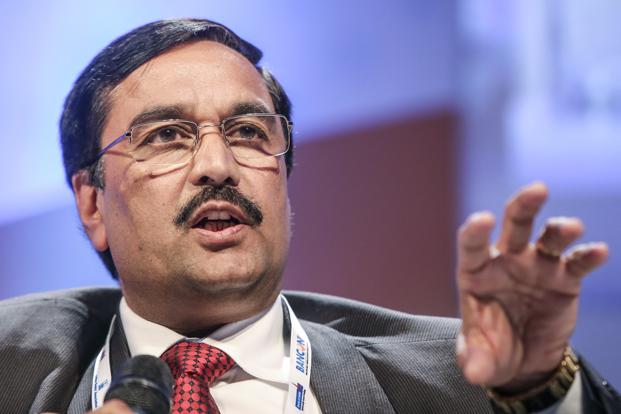at top of PSU banks?
India’s government-owned banks have something to cheer about. For the first time, the public sector banks, which account for about 70% of the banking assets in the country, will have three women chief executive officers (CEOs). In its 43-year history, the state-run banking industry has had only 3 women chiefs, including Nupur Mitra, the current chairperson of Dena Bank in Mumbai, who will step down in December.
Shubhalakshmi Panse, an executive director (ED) of Vijaya Bank, will take over as chairperson of Allahabad Bank in Kolkata in August, and Canara Bank ED Archana Bhargava will move to the top of another Kolkata-based lender, United Bank of India, in January. Vijayalakshmi R. Iyer, Central Bank of India’s ED, will take over as CEO of Bank of India in October.
Fourteen large private banks were nationalized in 1969 and seven more in 1980. The industry had to wait till June 2000 to get its first woman CEO, Ranjana Kumar, who is credited with turning around Indian Bank in Chennai that was crumbling under the burden of bad loans. H.A. Daruwalla of Central Bank was the second woman CEO. State Bank of India (SBI), the nation’s largest lender, has not seen any woman occupying the corner room. It has two woman deputy managing directors though—Arundhati Bhattacharya and Soundara Kumar. State Bank insiders say Bhattacharya has the age and the talent to get the top job.
Bharati Rao became the first deputy managing director of SBI in 2006, in charge of international operations. Renu Challu was the second woman to rise up to that rank as the head of State Bank of Hyderabad. But no woman has risen to become a managing director in State Bank as yet.
After the three EDs mentioned above become CEOs, only one state-run bank will have a woman ED—Punjab National Bank’s Usha Ananthasubramanian. With over five years to retire, she has a fair chance to head a bank or two. Vijaya Bank’s Panse, too, became an ED at 53, after having become a general manager at 49; but her carrier progression at the last lap has been slow for reasons I am not aware of. Typically, it does not take so long to move up at this level. Sunanda Lahiri is one ED—the first in a Kolkata bank (United Bank of India)—who didn’t rise to become a chairperson as she did not have too much time left till retirement.
Tarjani Vakil was the first woman to get the top job in a state-owned financial institution, predominantly a male bastion. She took over as the chief of Export Import Bank of India in October 1996.
In the private sector, women have been playing significant roles at the top. Chanda Kochhar heads ICICI Bank Ltd, India’s largest private lender, and Shikha Sharma, Axis Bank Ltd. ICICI Bank, where Sharma also used to work, has been seen always as an equal-opportunity employer that encourages women professionals. Two names that instantly come to mind are Kalpana Morparia (now head of JP Morgan in India) and Lalita Gupte. Madhabi Puri-Buch (now with London-based private equity firm Greater Pacific Capital) and Renuka Ramnath (Multiples Alternate Asset Management Pvt. Ltd) also had long stints with the ICICI group. There are other women powerhouses as well in the financial sector such as Naina Lal Kidwai (Hongkong and Shanghai Banking Corp. Ltd), Meera Sanyal (ABN Amro), Kaku Nakhate (Bank of America-Merrill Lynch), Ashu Suyash (Fidelity International), Shashi Sharma (IFCI Ltd), Manisha Girotra (Moelis and Co.), Vishakha Mulye (ICICI Venture Fund Managements Co. Ltd) and Falguni Nayar (till recently with Kotak Mahindra Capital Co. Ltd). For the record, India’s central bank has had three women deputy governors in its 77-year history—K.J. Udeshi, Usha Thorat and Shyamala Gopinath.
A recent article in The Economist, quoting a report from McKinsey, a consultancy, says Asian women lag far behind women in the West where they typically make up 10-20% of the upper management and the company boards. Australia is an exception where women’s share of board and executive-committee jobs is almost at par with that in America and parts of Europe.
The article says in India only about one woman in three has a formal job, and even education is unequal. In 2009-10, only 10-15% of students entering the elite Indian Institutes of Management were female. Based on interviews with 1,500 executives at 744 large companies in 10 Asian countries, the McKinsey report, authored by Claudia Süssmuth-Dyckerhoff, Jin Wang and Josephine Chen, says most senior managers in Asia, unlike their western counterparts, do not see “gender diversity” as a strategic priority. I don’t have the latest data, but going by March 2009 numbers, women constitute about 17% of the total workforce in nationalized banks. In the clerical cadre, women account for a little more than one-fourth of the workforce (26.5%) but the percentage drops to 18.87% in the officer cadre and 2.66% in the executive cadre (deputy general manager and above). There were only 17 women among 383 general managers in nationalized banks in 2009. At that time, SBI had 59 women in the executive cadre and 8,524 women officers. A finance ministry-appointed panel on human resources in state-run banks, headed by former Bank of Baroda chairman A.K. Khandelwal, identified women’s reluctance to transfers as the main reason for their inadequate representation in senior management. This is not a big issue in technology-savvy private banks, which focus on urban India.
The Economist article cites two of the most common reasons for lower representation of women at the top—the double burden of work and domestic responsibilities and the need to be always available and free to travel. They are very similar in Europe and Asia. The Khandelwal panel has recommended a two-year sabbatical for women employees to take care of domestic responsibilities. The top management’s reluctance to move women into credit and strategy in banks also comes in the way of women moving to the top.



